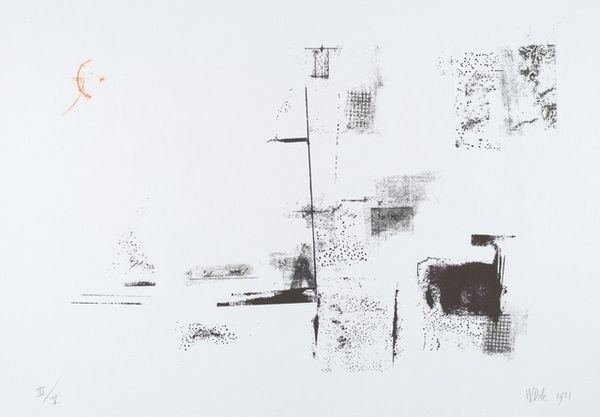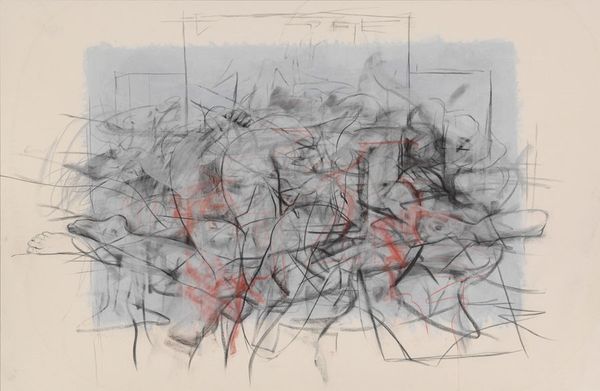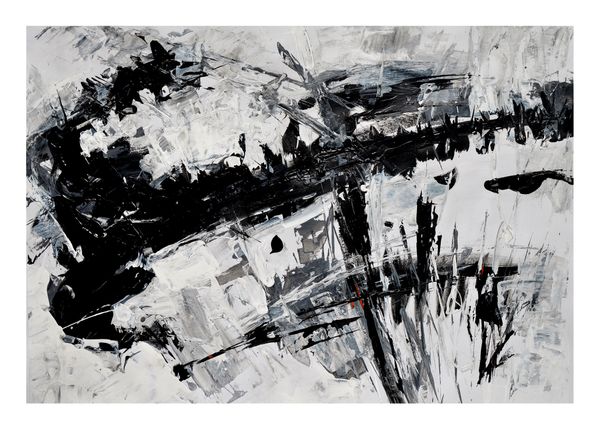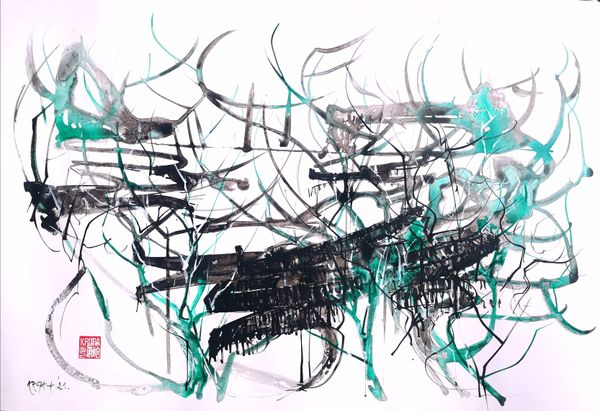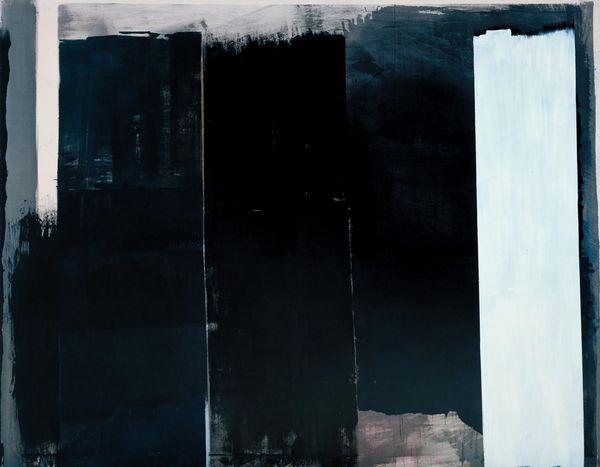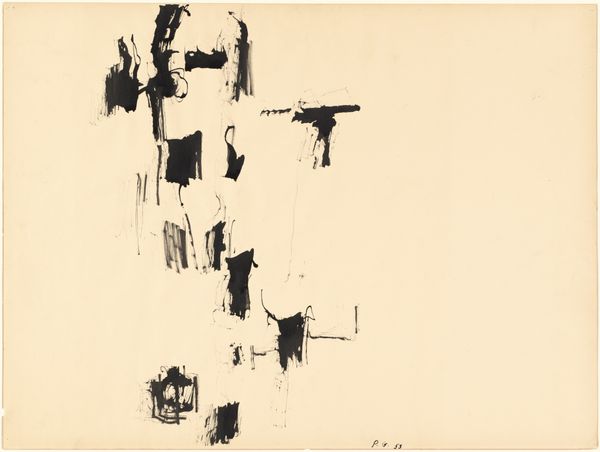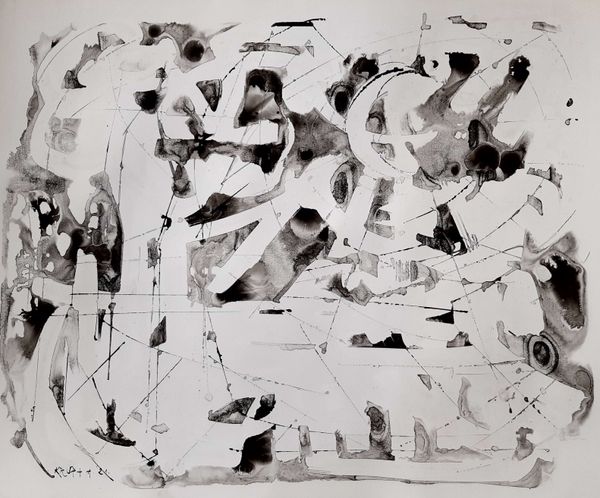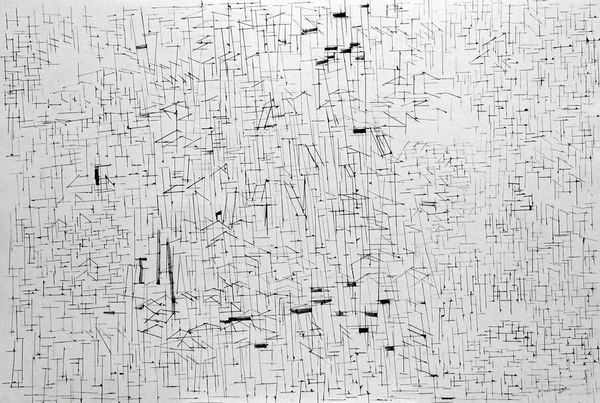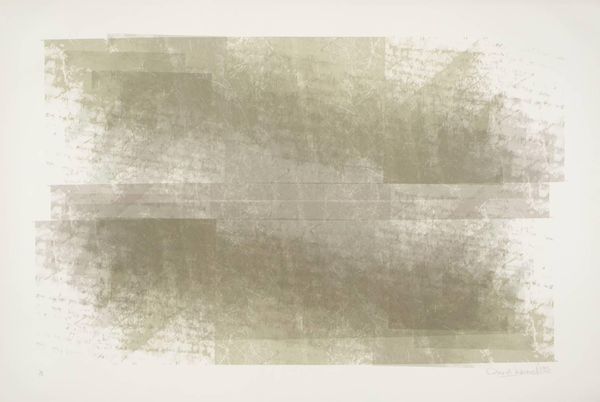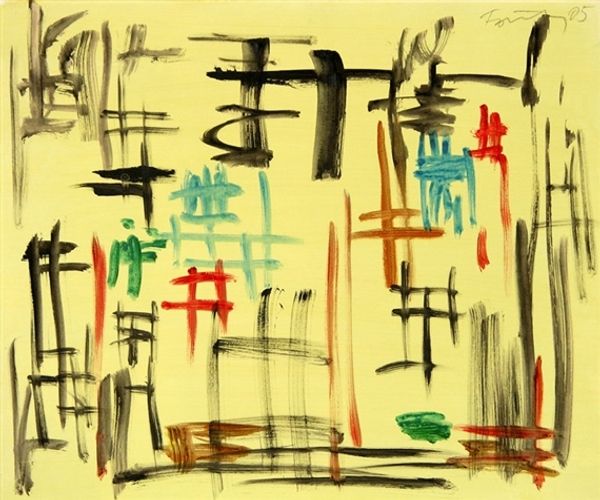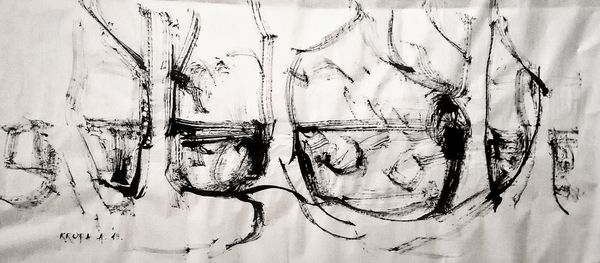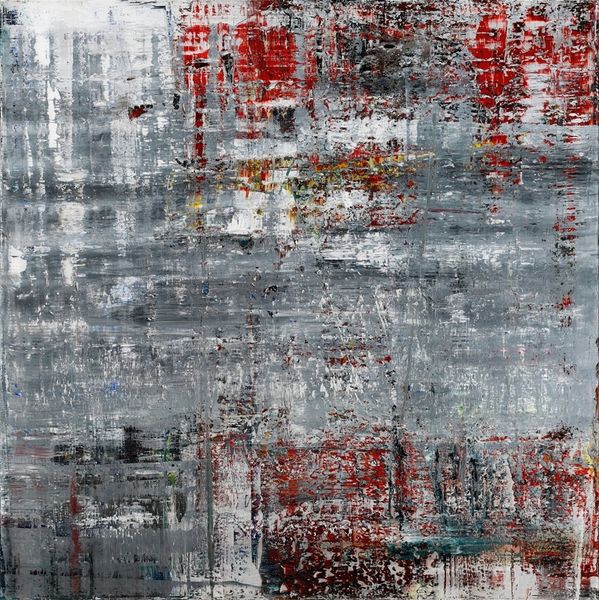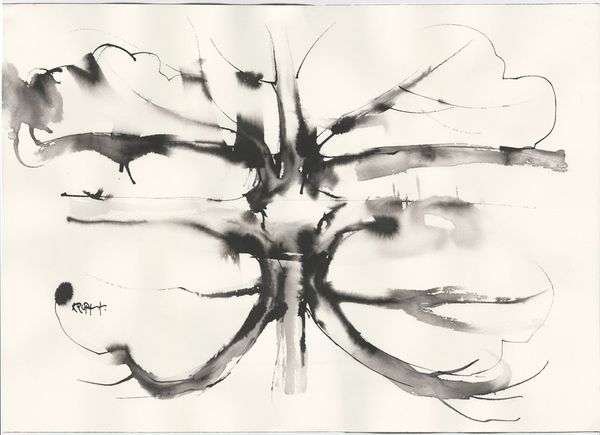
Dimensions: unconfirmed: 2000 x 3000 mm
Copyright: © Thilo Heinzmann | CC-BY-NC-ND 4.0 DEED, Photo: Tate
Editor: This is an untitled work by Thilo Heinzmann. It's a large piece, around 2 by 3 meters and looks like ink on… maybe canvas? The geometric shapes feel architectural. What can you tell me about Heinzmann's process here? Curator: Notice the application. The diluted ink appears sprayed or dripped, not brushed. Consider the industrial connotations. Is Heinzmann referencing mass production? How does this contrast with the hand-applied element, the drip? This tension points to a commentary on labor, wouldn't you agree? Editor: That's a really interesting idea. So the materials and method speak to production itself, not just aesthetic choices? Curator: Precisely. Heinzmann uses the bare minimum to construct a dialogue around production, the artist’s hand, and even the gallery’s role in consumption. Editor: I’m seeing so many layers of meaning now. Thanks! Curator: My pleasure. It’s all in the materiality.
Comments
Join the conversation
Join millions of artists and users on Artera today and experience the ultimate creative platform.
tate 7 months ago
⋮
Untitled is a large abstract painting that depicts a series of intersecting lines and areas of pigment mixed with epoxy resin. The only colours used are black and red. The pigment has been applied onto twenty two rectangular styrofoam tiles that have been laid edge to edge to create the picture surface, which is subtly marked by the grid pattern of the tiles and the pixel-like surface of the compressed polystyrene balls that form them. The work has been placed in a Plexiglas box which not only acts as a protective layer but is also an integral part of the painting. Heinzmann uses Plexiglas frames in order to give his works an object quality which takes it beyond the field of traditional wall-hung painting. The colour white is a dominant feature of Heinzmann’s work, as is his use of styrofoam. The texture and make-up of the styrofoam is crucial to the overall composition of the work. Being both fragile and coarse, its surface helps to create a rhythm in the painting similar to that of the weave in a canvas support. Heinzmann used different means to apply the pigment and resin – brush, roller, dripping and palette knife – resulting in a surface which varies in its texture from a light application to thick impasto. In places, the surface of the styrofoam is left visible. These different applications mimic different styles of painting – from abstract expressionism to colour field painting, from geometric abstraction to tachisme. The resin seems to float upon the white surface, setting up a dynamic between what is traditionally considered as foreground and background within the picture plane.
